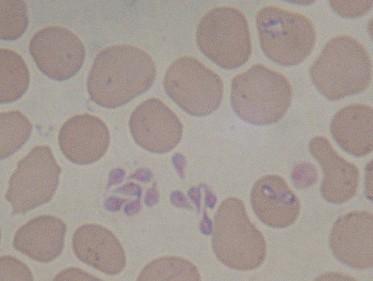Great dane health : the piroplasmosis
Definition
The piroplasmosis or babesiosis is a disease which still kills many dogs each year. This disease is caused by a protozoan parasite Babesia type which penetrates inside the red corpuscles, causing them to burst.
The consequence is an anemia, a fall in the rate of red corpuscles in the blood. Destroyed red corpuscles cause an intoxication of the liver and kidneys in the end.
A dog suffering from piroplasmosis is not contagious. It does not transmit the disease to other dogs, other animals or humans.
Transmission
The transmission of this disease is made only by ticks. However, all ticks do not carry piroplasms.
To suck the blood of the dog, the tick bites the animal and injects an anticoagulant saliva which contains parasites of piroplasmosisis.
Symptoms
The first symptoms appear 6-8 days after the tick bite carrying the parasite. Symptoms are:
- prostration
- loss of appetite
- vomiting
- fever
- urine abnormally colored (orange, red, or dark brown)
- very pale mucous membranes of the eyes and lips
- accelerated breathing
- weak and rapid pulse
- loss of weight
Diagnosis
The only way is to take a little blood from the dog and examined under microscope to detect the presence of parasites in red corpuscles.

Blood of a dog suffering from piroplasmosis
© François Bagaïni
Treatment
Depending of the stage of disease progression, treatment consits to do :
- injections to destroy the parasite
- infusions to rehydrate the animal and fight against liver and kidneys complications
- transfusions to compensate for the destruction of red corpuscles.
Started quickly the treatment is effective. Some dogs, however, retain sequelae. Complications can be severe and often harmful to the dog. It's therefore imperative to detect the onset of symptoms and detect the disease as quickly as possible.
Prevention
Prevention can be done at two levels:
By anti-parasitic
The best way to prevent babesiosis is to prevent the tick from biting the animal. You have to choose an anti-parasitic effective. We find the form of collars, sprays or as pipettes. Anti-parasite must be used even in vaccinated animals.
by vacination
The vaccine does not guarantee 100% protection. It's most effective on young dogs who have never been contaminated by the disease. For adult dogs, it's unfortunately not totally effective but it significantly reduces the risk of disease.
Top of the page

